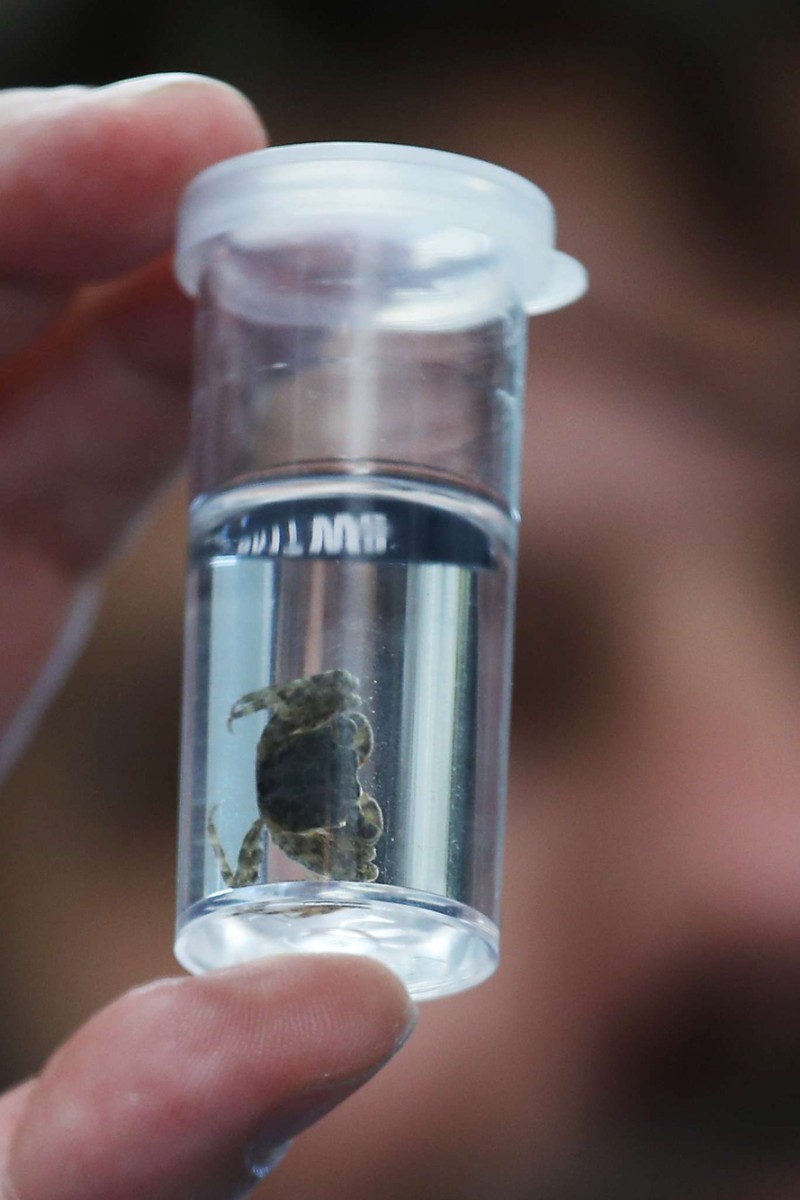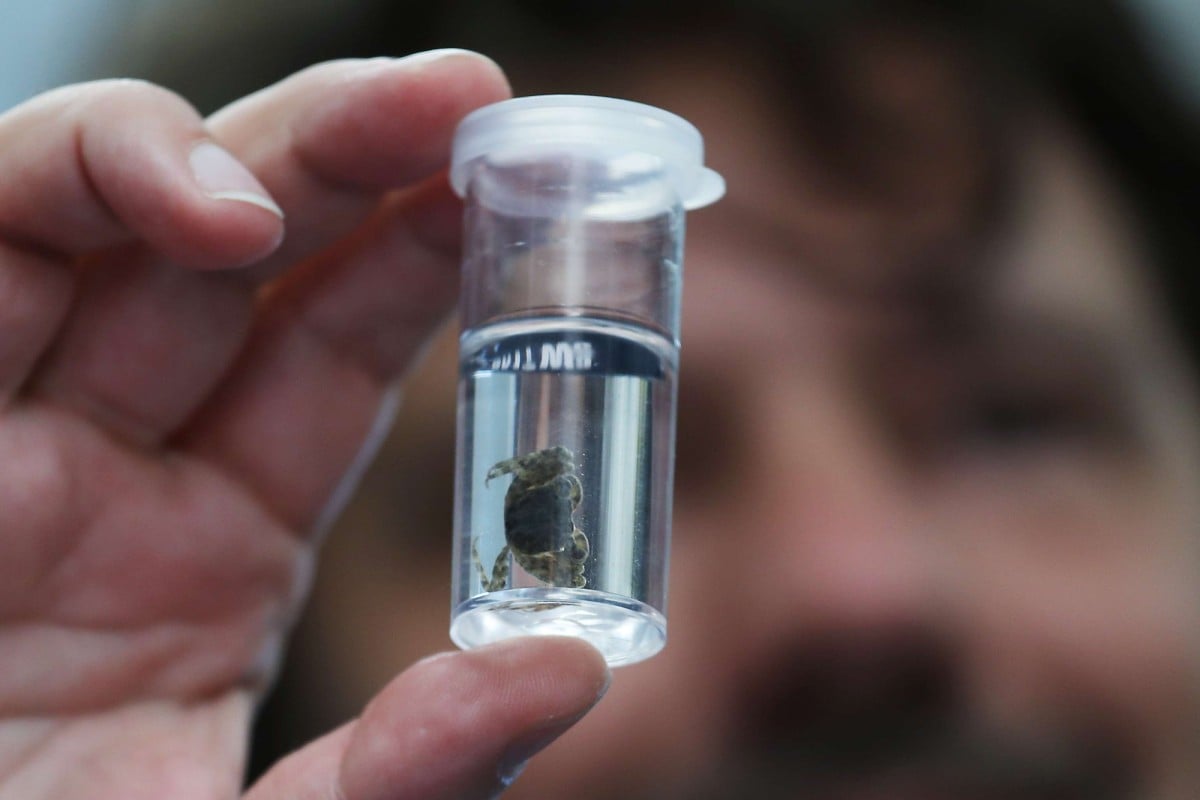
A crab that seems to only exist in one part of the world – Ting Kok in the New Territories to be precise – has been discovered by an undergraduate at HKU
 The tree-climbing Haberma tingkok crab has, as of yet, only been found in Hong Kong.
The tree-climbing Haberma tingkok crab has, as of yet, only been found in Hong Kong. Scientists have discovered Hong Kong’s first native tree-climbing crab.
The Haberma tingkok, slightly larger than a fingernail or less than a centimetre long, was spotted last summer crawling on the branches of mangroves in Ting Kok, a coastal area facing Tolo Harbour in the New Territories.
While there are 15 to 20 other species of crabs in the world that can climb trees, the Haberma tingkok is more closely related to two other species that share the unusual characteristic of hooked legs in the male – used to grasp the female while mating. These are found in the mangroves of Singapore and Indonesia and are not known to climb trees, preferring to live in mud.
“[This crab is] only known to be from Tolo Harbour for now. There’s no other part of the world where it is found. What’s important is it means that Hong Kong mangroves are alive. There are lots of things to search for and lots of biodiversity there,” Dr Stefano Cannicci, an associate professor at the University of Hong Kong’s Swire Institute of Marine Sciences, said.
The tiny, dark brown, crustacean is only the second mangrove species that is native to the city.
The last discovery of an native mangrove crab species was in 1975.
The Haberma tingkok will be the latest addition to about 2,000 species of crabs around the world, of which only one per cent are known to be able to climb trees.
Cannicci called the discovery “an evolutionary milestone”.
“Mangroves are a special place to study animals. Animals in mangroves are evolving from a marine to a terrestrial system, where crabs pretend and move like insects and do strange things,” Cannicci said.
Crabs, mainly known to live in mud or freshwater, might have evolved to live on higher ground because of a lack of oxygen in warmer waters, Cannicci explained. Another possible theory was that they had to escape from predators in the water, such as larger crabs and fish.
The crab was first spotted by Steven Wong Ho-tin, a fourth-year undergraduate at HKU and later identified by Cannicci.
“At the time I was only an intern doing a survey when I spotted it by chance on a tree, somewhere around my chest level. I was curious to know what kind of species it was,” Wong said.
The team could verify its significance only by identifying the characteristics from the male species, which was later found by Cherry Cheung Cheuk-yiu, an HKU research assistant.
Altogether, the team has spotted around 20 of its kind in Ting Kok, where its name comes from.
Further field surveys and research would need to be conducted to determine its life cycle, population and distribution in May to September, when crabs are known to be active.
Ting Kok, the third largest mangrove area in Hong Kong, is home to a rich diversity of organisms ranging from horseshoe crabs to sand snails, but does not have statutory protection.
When asked if the construction of an artificial beach at Lung Mei in Ting Kok would affect their habitat, Cannicci said that more needed to be done to protect mangroves, which are endangered by land reclamation and water pollution.
“There should be more efforts [to protect them], but the government is going in the right direction,” Cannicci said. “There [needs to be a compromise with] coastal development, but the stress that the government is putting on biodiversity research is really high level in Southeast Asia.”
Some HK$2.4 million from the government’s Hong Kong Environment and Conservation Fund has been allocated to Cannicci’s team to study and assess the biodiversity of mangroves across Hong Kong in June for the next two years.